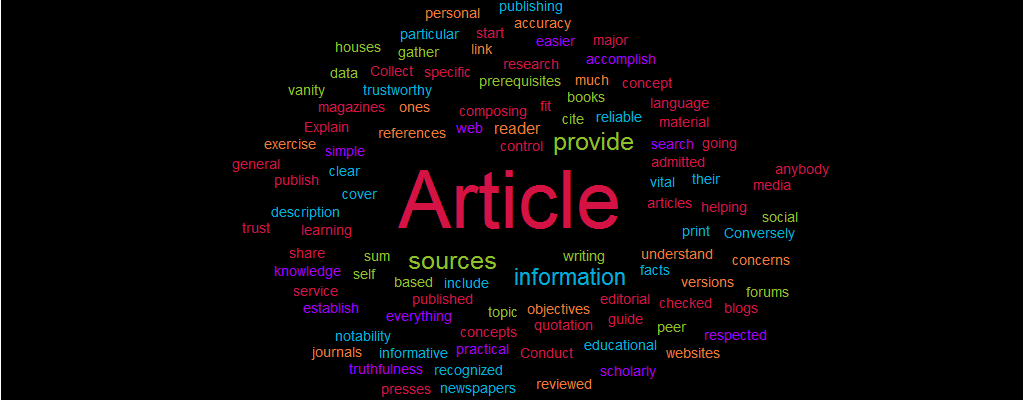How to Write Your First Article
Publication Date:

Do you want to publish your research but have no idea about how to start? If you want to share your knowledge with a particular article writing service, then this practical guide on composing helping articles is for you.
Conduct research and gather references
Collect sources for the data you are going to include in your article. It is vital to provide references to establish notability and to cite specific facts. You may only use reliable sources for composing educational or informative articles. That is, these sources have to exercise any form of editorial control and be checked for accuracy and truthfulness of facts.
In general, print sources and their web-based versions are admitted as the most trustworthy, though a number of web-sources are also recognized as the ones you can trust. Among the reliable sources of information are books published by major publishing houses, magazines, newspapers, peer-reviewed scholarly journals, along with the websites which fit the same requirements as respected print-based sources.
Conversely, sources without any editorial control are not admitted as reliable. This concerns books published by vanity presses, self-published magazines, blogs and forums, personal social media, and so on. Generally, if anybody can post information without anyone else checking it, likely, the information is not reliable.
Trustworthy sources of information can be found in your local library, but if you prefer using web-based sources, search in Google Books and News archive searches instead of a simple web search.
It is vital not to violate copyrights. You should never simply copy/paste information into an article for sale unless it is a short quotation, placed in quotation marks. Even when using the material that is in the public domain, you must provide references to the primary source.
Write the introduction
The first sentence of the article should briefly sum up the topic you are writing about. The second sentence should provide a little bit of specific details. Make sure to use a clear and easily understandable language.
It is recommended to devote one article to a single topic. This way, you will not overwhelm the reader with a huge amount of new information. If it is difficult for you to sum up everything in one sentence, it means you might be trying to cover too much information in one article.
Provide your prerequisites, objectives, and a description
Include a top box to help the reader understand where he/she is in the learning process.
Prerequisites: What should the reader already know to understand your article better? Mention it in this section, or provide a link to another article that covers the concept.
Objectives: Here, you have to shortly state what the reader will accomplish throughout the article.
Once you have written the prerequisites and objectives sections, craft a more extended description with a more detailed overview of the writing that highlights the most significant points. Explain why it is important for the reader to take the time to read your article.
Proceed to composing an article
Now, it is the perfect time to cover the chosen issue in detail. You are free to structure your article however you want. Write carefully about all the crucial aspects of the topic. Explain how everything works, provide syntax, add links to the full reference documentation, etc.
Here are just several tips you may want to use while working on your first article:
- Concentrate on one concept in your article. If it seems to you like you need to write about other topics, it means either you are missing a prerequisite article, or should divide your article into several ones.
- Use simple language. Do not overload your writing with technical terms. If there is a necessity to include one, define it, or provide a link to its glossary entries.
- Provide clear examples so that your theoretical concepts are easier to understand. Most people learn much better by example.
- You can make things even easier to digest by including visual aids. This is also a good way to present extra information. So, do not hesitate to add images, videos, tables, diagrams, and so on.
Provide some “active learning” material
It is always a good idea to provide tutorials, exercises, and tasks to accomplish. Due to such assignments, the readers can experiment with the concepts of your article. This way, the information can be better “locked” in their brains.